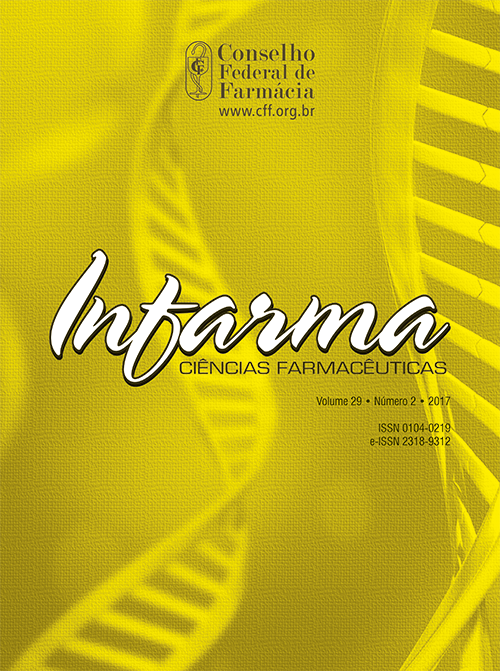Medicinal plant versus conventional medicine interaction in arterial hypertension treatment
DOI:
https://doi.org/10.14450/2318-9312.v29.e2.a2017.pp90-99Keywords:
phytotherapy, drug interactions, hypertensionAbstract
Hypertension, among chronic diseases, appears as health problem with one of the greatest magnitude, at present is one of the main causes of cardiovascular morbidity and mortality in Brazil. The treatment consists in the use of synthetic
drugs and medicinal plants, and this association is getting even more frequent, increasing the risks of interactions. This work is aimed to describe, through a literature review, the main interactions between herbal and synthetic drugs used in the therapy of hypertension and discuss the implications of these products concomitant use. A narrative literature review was carried out in papers published in the period 2006-2016 addressing drug interactions with medicinal plants from the ethnopharmacological survey, followed by studies of antihypertensive activity confirmation. The plants recognized for the hypertension treatment were Allium sativum, Alpinia zerumbet, Citrus sp., Lippia alba, Passiflora sp., Cymbopogon citratus, Sechium edule. Possible interactions of these plants with synthetic drugs to treat hypertension were evaluated.
It was noted that the main interactions involved in the use of herbal associated with the use of medications are a pharmacodynamic type. Thus it is necessary to be cautious when associating the use of plants with synthetic drugs.
Downloads
Published
How to Cite
Issue
Section
License
Authors who publish in this journal agree to the following terms:
- Authors retain the copyright and grant the journal the right of first publication, with the work simultaneously licensed under the Licença Creative Commons Attribution which allows the sharing of work with acknowledgment of authorship and initial publication in this journal.
- Authors are authorized to take additional contracts separately, for non-exclusive distribution of the version of the work published in this journal (e.g. publish in institutional repository or as a book chapter), with acknowledgment of authorship and initial publication in this journal.
- Authors are allowed and encouraged to publish and distribute their work online (e.g. in institutional repositories or on their personal page) at any point before or during the editorial process, as this can generate productive changes as well as increase the impact and Citation of published work (See O Efeito do Acesso Livre ).


